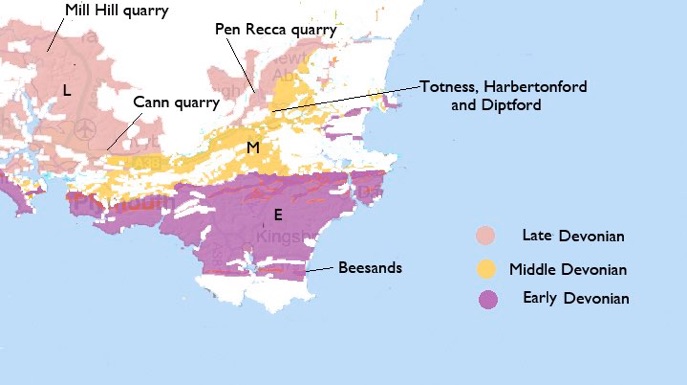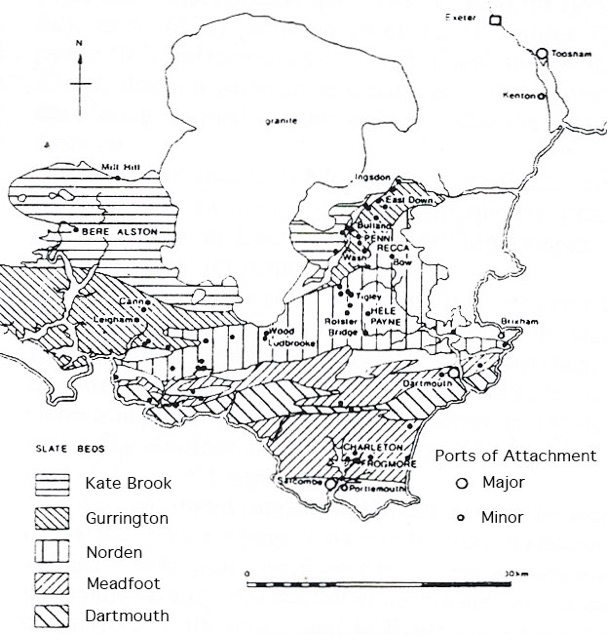DEVON SLATES

1.10.15

Slates produced in Devon were summarised in 2012 in Hughes T G Slating in South West England for the Society for the Protection of Ancient Buildings –
To the north and east of Plymouth, roofing slates were produced from the Early Devonian Meadfoot Group (Meadfoot Slates); the Middle Devonian (Norden Slates); and the Late Devonian, Tavy Formation [Kate Brook Slate], Gurrington Slate Formation (Gurrington Slates) and Lydbrook Slates. Kate Brook Slate is a minor resource.
Roofing slate quarries include:
Early Devonian
• Beesands (Meadfoot Sandstones). The quarry was also known as the Start Bay Slate Quarry. The slates are grey or green-grey weathering to silver.
Middle Devonian
• Harbertonford (Harberton slates) and Diptford. The slates are dark and were produced in very small random sizes.
• Around Totnes (Nordon Formation). When fresh they are grey but weather to orange-brown.
Late Devonian
• Cann. Worked since 1683 it produced grey slates in parts hardened by the intrusion of an elvan (granite) dyke. Despite it’s hardness it had a good reputation
• Mill Hill (Tavy Formation - Kate Brook Slates). In the west the Tavy Formation consists mainly of smooth slates with a greenish chloritic sheen to cleavage surfaces. To the east around Buckfastleigh the upper part is a green-grey slate but the lower part contains purple and green mottled slates. Kate Brook slates are a smooth grey-green with a lustrous cleavage surface making them quite distinctive. It weathers to yellow-grey.
• Pen Recca (Gurrington Slate Formation). Gurrington Slates occur in the Ashburton and Buckfastleigh area. They are bright green and purple when fresh and can be mottled.
• Coryton and Chillaton (Lydford Slates). The Lydford slates were used south-east of Launceston around North Brentor, Lydford, Bridestow, and Chillaton. They are micaceous and dark grey weathering to brown-grey.




Map reproduced from Keystone Cox J, and Thorp J R L, 1991, Authentic Slating in Devon, Association for Studies in the Conservation of Historic Buildings, Vol 16. Based on J P Allen, 1984, Medieval and Post Medieval Finds from Exeter 1971 - 1980 p301 Exeter City Council and the University of Exeter